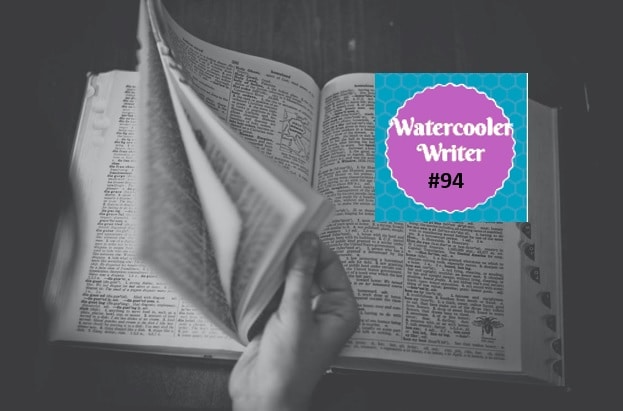
Five Things to Know about Using Descriptive Narrative Writing in a Nonfiction Book
FIVE THINGS TO KNOW ABOUT USING DESCRIPTIVE NARRATIVE WRITING IN A NONFICTION BOOK
Conventional wisdom suggests that descriptive narrative belongs in the domain of fiction writing.
Undoubtedly, fiction writers do need to exploit descriptive narrative as much as possible. However, for nonfiction writers, utilizing descriptive narrative can provide an effective tool to draw in and engage readers.
Conventional wisdom also suggests that nonfiction writing may be boring or dry. As this article will show, nonfiction writing can be just as interesting and lively as any creative writing endeavor. The secret lies in using descriptive narrative effectively within the nonfiction domain.
Five Things to Know about Using Descriptive Narrative Writing in a Nonfiction Book
1. The Purpose of Descriptive Narrative Writing in Nonfiction Books
One might ask, “what is the purpose of using descriptive narrative writing in a nonfiction book?” To answer that question, writers must consider their readers’ experiences. This is the point where nonfiction meets descriptive narrative writing to create a singular reading experience.
Assuming that nonfiction writing cannot benefit from using descriptive narratives is short-sighted. Virtually any nonfiction topic can benefit greatly from implementing a descriptive narrative.

In particular, topics such as history, art, politics, and journalism, among many others, can use descriptive narrative writing to paint a picture in their readers’ minds.
Consequently, the descriptive narrative provides writers with an effective tool they can use to transport readers to a completely new world.
Please note that descriptive narrative writing does not entail somehow reducing the seriousness of topics. Quite the contrary, descriptive narrative writing aims to properly focus on nonfiction so that the language used helps portray material vividly. Descriptive narrative writing allows content to flourish in readers’ minds, thereby effectively fixating information.
The key to descriptive narrative writing lies in the way writers use the language to convey their message persuasively.
2. The Use of Descriptive Language in Nonfiction Books
A common misconception about descriptive narrative writing is that writers must “create” material. While this is certainly the case in fiction writing, nonfiction writing can utilize descriptive narrative to cement factual information.
Descriptive language aims to enhance readers’ perception of the writer’s message. As a result, descriptive narratives enable writers to frame their ideas in a much more compelling way. Here are some descriptive adjectives that exemplify this proposition:
- Charming
- Ornate
- Gregarious
- Puzzled
- Discerning
Utilizing these adjectives allows nonfiction books to transmit messages and ideas better. Consider this comparison:
- The President addressed the nation this evening about his proposed tax reforms.
- This evening, the discerning President addressed the puzzled nation about his much-anticipated tax reform bill.
While properly structured and even economical, the first sentence offers a bare-bones, matter-of-fact description of the President’s address.
The second sentence, in contrast, offers many more clues about the President’s personality and the state of the nation.

Moreover, the statement offers insight into public opinion regarding the tax reforms.
This example is a small sample of how simple, yet highly effective, language can make a considerable difference in capturing readers’ attention. The beauty of descriptive narrative writing lies in simplicity. There is no need for overly ornate or inflated language. The secret lies in choosing words carefully to produce the desired effect.
3. The Power of the Senses
Focusing on the senses in a nonfiction book may seem counterintuitive. After all, how can one link sensory perception to a how-to guide or a cookbook?
Ah, therein lies the secret!
Some specific nonfiction topics lend themselves perfectly to sensory perception. For instance, cookbooks are the quintessential example of how sensory perception can greatly enhance the readers’ experience. Please note that sensory experiences help fixate readers’ understanding of the topic at hand.
Consider this situation:
- Chop three onions and toss into a frying pan until cooked.
- Chop three crispy onions and toss into a scorching frying pan until golden brown.

In this example, both sentences refer to the same situation. However, the first sentence merely describes the steps in the cooking process. The sentence does not provide readers with parameters they can utilize to determine if they have done the recipe correctly.
Conversely, the second sentence clearly highlights how using clear sensory words can activate the readers’ imagination. Readers can use the descriptive narrative to activate a mental picture without seeing the cooking process. This approach greatly enhances the overall effectiveness of nonfiction writing.
Some may argue that using sensory expressions in a cookbook is an obvious example. But what about other types of nonfiction books? For instance, could a history book use sensory experiences to portray historical events accurately?
Absolutely!
Sensory perception is a wonderful way of providing depth to historical events and figures. Consider the famous speech King George VI delivered at the outset of World War II:
- The King’s voice commanded every Brit to take up their arms and fight.
- The King’s resounding voice defiantly commanded every brave Brit to take up their rightful arms and fight courageously.
Indeed, the second example attempts to deliver a sensory experience that closely resembles the true historical event. Descriptive narrative writing allows readers to immerse themselves in any nonfiction book. The purpose is to give readers colors, textures, scents, visuals, and emotions they can firmly grasp. In doing so, nonfiction books can come alive in the readers’ minds.
4. Using Figures of Speech
Figures of speech can go a long way toward helping portray meaning effectively.
Please note that figures of speech have a place in both formal and informal writing. A common mistake is to believe that using figures of speech reduces a serious topic into a trivial one.
Quite the contrary, figures of speech can put a fresh spin on what may be a dull or monotonous dialog.

Consider the following figures of speech.
Metaphor: A metaphor is a wonderful way of exemplifying concepts and ideas. Metaphors often work very well with abstract concepts to represent them accurately in the readers’ minds. For example:
The government’s economic stimulus plan cast a wide net across the economy.
In this example, “cast a wide net” helps readers latch onto the idea of an overarching economic recovery plan. This statement clearly refers to a proverbial net rather than a literal one. Consequently, readers can find this statement much more enjoyable than something like “The government created a broad stimulus plan.”
Simile: Similes are a staple of creative writing. Nevertheless, similes can also become effective tools for nonfiction books. Similes help draw a clear picture in the readers’ minds by drawing comparisons between various objects, ideas, or people.
Consider this example:
The American and British soldiers stood as tall as giants on the beaches of Normandy as they faced the relentless onslaught of German machine gun fire.
With this example, the author attempts to paint a highly detailed picture in the readers’ minds. By stating that the American and British soldiers stood “as tall as giants,” the author intends to draw a clear expectation of the soldiers’ bravery. In contrast, a statement such as “The American and British soldiers bravely faced the German resistance at Normandy” does not fairly depict the bravery of the American and British soldiers.
Analogy: An analogy, like a simile, draws comparisons between various objects to enhance comprehension. The difference between an analogy and a simile lies in the objects they compare. A simile compares two objects that have some similarities between them. An analogy compares two seemingly unrelated objects, thereby enhancing the quality of the comparison.
Here’s an example:
The court’s decision was like a stick of dynamite.
This analogy compares two completely different ideas. After all, what does a court decision have to do with a stick of dynamite? Therein lies the beauty of analogies. Readers can infer that the court decision was “explosive.” It is then up to the author to further explain why this court decision is “explosive.”
Personification: Personification consists in providing human qualities to a non-human element. This tactic aims to enhance comprehension by enabling readers to create parallels between a concept and human behavior.
Consider this situation:
The new gun control bill has the legs to go far.
In this statement, the author uses the term “has the legs to go far” to imply that the new gun control bill will eventually become a law. While the author could have said “The new gun control bill will eventually become a law,” using personification makes a dry statement become much more vivid in readers’ minds.
Hyperbole: In short, hyperbole utilizes exaggeration to drive home a point. Hyperbole is a great device, especially when authors feel strongly about a point.
Here is a great example:
Employment figures this week caused a monumental collapse on Wall Street today.
Affirming there was a “monumental collapse” is a serious statement. After all, what exactly would constitute a “monumental collapse?” Using hyperbolic statements allows authors to paint the picture they want in their readers’ minds.
5. Overdoing Descriptive Narrative Writing
Descriptive narrative writing can make nonfiction books come alive. Nonfiction content can quickly go from a “stale” monologue into a vivid two-way dialog.
However, there is the risk of overdoing descriptive narrative writing. “Overdoing” descriptive narrative writing refers to using inflated and even pompous language to adorn writing.
Please bear in mind that it is easy to get carried away. At that point, descriptive narrative writing risks becoming counterproductive as substance gets lost amid fancy language.
Consider this situation:
- The Prime Minister’s speech was boring.
- The Prime Minister’s speech failed to light a fire in the audience.
- The Prime Minister’s speech resulted in a colossal failure that did not deliver on the precious pearls of wisdom sought by the audience.

These sample sentences illustrate the degrees to which writing can be effective or miss the mark.
While effective in conveying the main idea, the first sentence is simplistic. One can infer that this sentence is pedestrian in its style.
The second sentence offers a balance between descriptive narrative and concise writing. The author communicated their impression of the speech without overinflating the language.
The third sentence goes over the top. It uses too much language, causing the reader to go on a winding journey before reaching the ultimate destination.
The goal is to balance narrative with precision. Using descriptive narrative in nonfiction books is as much skill as art. Authors must find the appropriate mix of linguistic artistry and substance.
One Final Thought
What happens when the writing well comes up dry? In other words, what happens when authors, editors, and publishers want to spruce up writing but cannot seem to find a way to make it work?
Instead of struggling to spice up nonfiction books, authors, editors, and publishers can turn to a ghostwriter. Hiring a ghostwriter can become a highly useful solution when looking to incorporate descriptive narrative writing into nonfiction books. In particular, a professional ghostwriter can utilize descriptive narrative to craft the right message audiences want to hear.
How is this possible?
Professional ghostwriters are a mixed bag of skills. On the one hand, they have the skill to produce substance based on fact. On the other hand, they have the sensitivity to use the right language to evoke emotions in their audience.
There is a catch to hiring a ghostwriter, though.
Hiring a ghostwriter entails finding a person with the right mix of skills. Finding a ghostwriter that can incorporate descriptive narrative writing in a nonfiction book requires someone with experience in both fiction and nonfiction.
These ghostwriters typically have a long track record of producing a variety of works. Additionally, professional ghostwriters are willing to work with their clients until they find an appropriate voice. From there, the narrative builds itself. It is quite feasible to create an entire narrative from a single word.
Crafting a memorable narrative in a nonfiction book should not be a daunting task. It should be a labor of love. Often, it is like a master artist patiently creating an artwork until it is perfect.
Related Content
- 0 Comment
Subscribe to Newsletter
- How Can SharePoint Be Used To Organize and Disseminate SOPs?
- Planning the Perfect Genealogy Research Trip: A Step-by-Step Guide
- From Silly to Awesome: How Words Change Meaning Over Time
- The Psychology of Font Choice: How Typography Impacts Content Engagement
- How to Distribute SOPs for Maximum Usability



